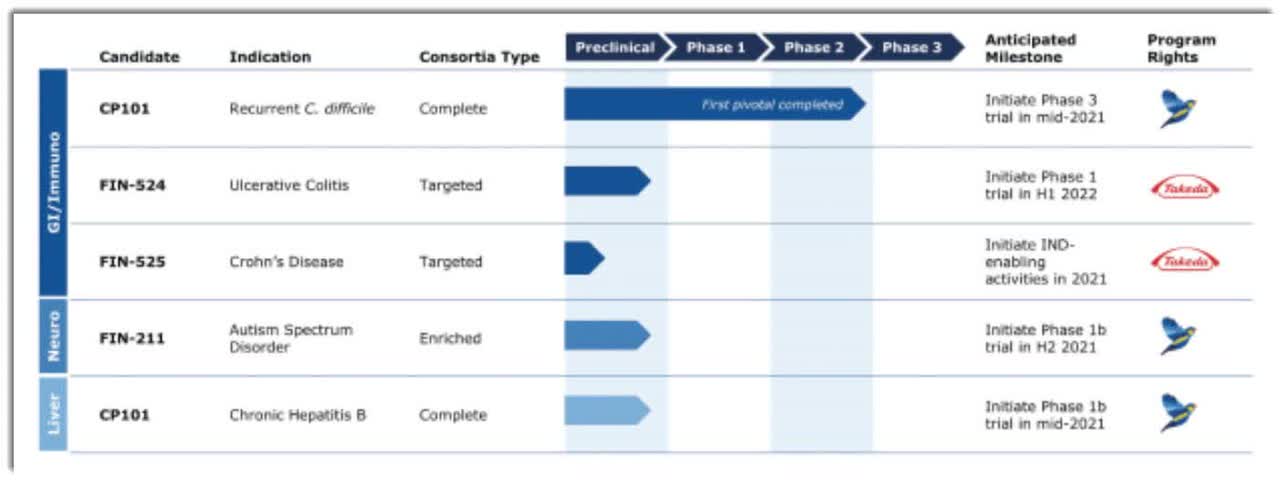

Carrera, who co-leads the patent prosecution team at Amin Talati Wasserman LLP, says patents in the microbiome field always have to work around the US Patent Office’s prohibition on patenting naturally-occurring microorganisms. With more than 55 issued patents and 130 patent applications pending, covering diverse product strategies and therapeutic areas, we have established what we believe is an industry-leading patent portfolio that embodies our pioneering work in the field.” We believe the recent filing also speaks to the relevance of the patent portfolio Finch has established. “The recent filing speaks to the continued maturation of the microbiome field. On Finch’s part, Chief Business and Legal Officer Joe Vittiglio also declined to speak about the ongoing legal matter. in US District Court for the District of Delaware, but had no further comment while litigation remains pending. However, we will see if the declaratory judgment passes a number of procedural requirements to bring the action before there is an actual case or controversy.”Ī Ferring spokesperson acknowledged the filing of a declaratory judgement action against Finch Therapeutics Group, Inc. “Ferring filed the declaratory judgment in order to gain home-field advantage in the federal court of their choosing. “In terms of procedure, basing a declaratory judgment action on an SEC filing is something we haven’t seen in litigation yet in the microbiome field,” ” Ferring’s actions thus aim to clear the path for further development of its live biotherapeutic candidate without fear that Finch may allege patent infringement in the future. According to Ferring’s complaint, Finch has effectively “put investors and the world on notice that (1) they have patents directed to FMT products… and (2) they intend to enforce them aggressively against competitors, including Plaintiff Rebiotix. In the S-1 document, Finch made forward-looking statements and outlined the competitive space, including how it would “actively enforce” its patent rights.

So why the complaint by Ferring?Īs it turns out, in February of 2021 Finch undertook an S-1 filing with the US Securities and Exchange Commission, in preparation for a forthcoming Initial Public Offering. Paredes says Finch does not appear to have previously alleged infringement of the patents. So they’ve laid out why these patents would be invalid in view of the history of fecal transplant therapy and in view of these earlier publications.” “What Ferring has done in its complaint is provide a very good history of CDI and fecal transplants in general.

Paredes adds that the allegation would hold the seven patents to be anticipated by ‘prior art’, and therefore unenforceable. “Ferring is alleging its fecal transplant-based drug candidates do not infringe any of Finch’s seven fecal transplant patents, and even if they do infringe, these patents are invalid,” Peter Paredes, legal counsel and partner at Amin Talati Wasserman LLP based in Chicago, DC, and LA-a firm that is not involved in the matter-says Ferring has taken what’s called a declaratory judgment action against its competitor. Both companies’ products consist of complex microbial communities originating from healthy donor fecal samples. In December, Ferring filed a complaint with a Delaware court, seeking a declaration that its live biotherapeutic drug candidate RBX2660 does not infringe seven patents held by Finch – and moreover, that the original Finch patents cannot be enforced.įerring and Finch are competitors with late-stage therapeutic candidates that address recurrent Clostridioides difficileinfection (CDI). The latest IP dispute in the microbiome industry is between the Swiss-based global company Ferring Pharmaceuticals-which acquired the microbiome-focused company Rebiotix Inc. As in any new field, initial patent claims tend to be broad-but as new players constantly enter the field and new innovations are introduced, some of these initial patents remain defensible and some do not. In the relatively young microbiome biotechnology industry, companies aim to distinguish themselves from a growing number of competitors by protecting their intellectual property (IP).


 0 kommentar(er)
0 kommentar(er)
